
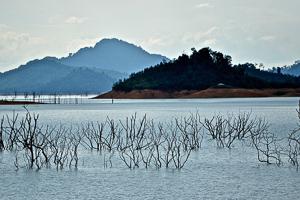
This is only the beginning. Land grabs, displaced peoples, increased conflict between humans and wildlife, extensive water and soil pollution, endangered species teetering on the brink of extinction. Just recently, the Forest Research Institute Malaysia declared the keruing paya, one of the iconic trees in Malaysia's rainforests, extinct, the last bastion of their survival wiped out to make room for palm trees.
Since I started reading more about the destructive nature of palm oil, I've become more aware of all the products I use in which the oil is a base ingredient. Organic peanut butter, candies, cosmetics, lotions, Girl Scout cookies, processed fast foods, pastries. It's not just the big corporations – Proctor and Gamble or Unilever – that use palm oil, but also some companies that I didn't expect: Whole Foods, Starbucks, and Seventh Generation. Our hunger for the product seems boundless.
So I sat down with conservationist and development consultant Robert Hii to talk a little more about the threat our natural world faces from palm oil and what we, as consumers in an increasingly connected and interconnected world, can do about it.
When we met, you mentioned how much has changed since you grew up in Borneo. What are some of your favorite memories from your childhood there?
My favorite memories are all of the jungles. We moved from Kanowit, a city in the state of Sarawak (on the island of Borneo), to Sibu, which was a huge town in comparison. The house we moved into backed onto open peatlands, and I remember hand-fishing for eels, basically sticking my hands into holes hoping to connect with something slimy.
One of my brothers-in-law was a Melanau, some of the oldest settlers in Sarawak, and he used to take me to visit his family, which involved long treks through jungles and up streams filled with all kinds of fish. We drank from those streams – the water clean and cool – and ate "sushi" pulled straight from the waters. I don't remember ever having to use mosquito repellent.
What brought you back to Borneo, and what had changed?
I was living in Canada, and I received a call from a nephew of mine who was interested in my social media campaigns for forests; he wanted to know if I could help out "back home." Sarawak is a difficult place in which to get much done as an activist as it's tightly controlled by a man who has ruled it with an iron fist for years. When I stepped off the plane in Sarawak, I saw a changed, almost empty, landscape. Most of the old forests are gone. The state government, using dubious sources, claims the area is still 80 percent forested, but maps from indigenous groups show 85 percent of the old forests have been disturbed or completely destroyed.

Orangutans are the most iconic species/victims of "development." If I have an audience that is more aware of the issues, I bring up the Sumatran rhino, whose numbers are estimated at no more than 200 animals spread between Sumatra and Borneo. But the orangutans, with their human-like features and intelligent, big brown eyes, appeal to a wider audience, one that may not understand or be familiar with the often complex science of conservation. Or perhaps it's because there is actually hope to save the species, whereas the extinction of the Sumatran rhino is now inevitable. People like to see hope rather than doom. If we act now, if we stymie the destruction of their habitat, we can save the orangutan.
Speaking of habitat destruction, how does palm oil affect ecosystems generally?
Palm oil plantations are set up as monoculture farms, and monoculture anywhere has the same impact as industrial palm oil plantations: You lose most of the biodiversity that can only be found in ancient forests. The palm oil-producing countries like to talk up how the plantations are capable of being a carbon filter and all, but what most people don't realize is that everything is interconnected. From the endemic plants found in ancient forests that feed insects and birds all the way up to nurturing jungle peoples, it's a nearly perfect system that has worked for thousands of years. And once that's gone, it's gone. That biodiversity never comes back, and the loss affects every aspect of life on the planet. We're even seeing lowered levels of immune systems in humans in the Western hemisphere because we have changed the ecosystems in Southeast Asia.
So how do these plantations, then, affect orangutan populations specifically?
Orangutan populations have free fallen in the past 20 years; estimates put the loss at 50 percent in that time. However, these are all estimates and I would be careful interpreting them. For one, no precise counts were done in the days "before we started caring," and even now, the estimates we get are based on spot studies in which scientists focus on only small sample areas. Many estimates I see put the Borneo orangutan at between 40,000 to 55,000. That's a huge discrepancy. Sumatran orangutans are estimated at 6000-7000, but even those numbers are questionable. If you looked at averages between actual loss of habitat and estimated population loss, the numbers of orangutans left would be much, much lower. The worst news is that the two countries in which they are found are hell bound on increasing their acreage of palm oil plantations. I personally find the pledges made at the Consumer Goods Forum on the issue of deforestation-free goods by 2020 as a death sentence for orangutans. We're going to see a major expansion of plantations in the next few years as palm oil producers and their customers rush to develop as much land as possible before this deadline. After that, of course their products will be deforestation free because there will be no more forests left.
World Orangutan Day is August 19, and I know because of these issues, you are a huge proponent of this event. What inspired World Orangutan Day, and what are your goals for it?
World Orangutan Day (WOD) came about from a casual discussion with U.K. teenager Abbie Barnes and U.S. teen Jason DeGrauwe. We had all felt the frustrations with the impending doom of the orangutans and the foot dragging by Western companies to work sustainably. We also shared the frustration felt by rescue groups on the ground. Aceh, in the northern tip of Sumatra, announced a plan to turn much of its protected forests into development zones. The area is home to the last remaining viable populations of the Sumatran orangutan, and this development would effectively kill most of the population there. The Borneo subspecies faces a similar grim future as the governments continue to push for development. We thought it was time to spread the word.
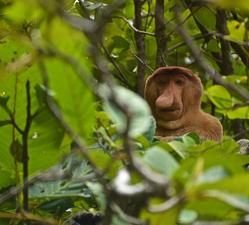
Yes, they are. At least, on paper. However, I am involved in situations that show how useless this paper protection is.
Case one: high conservation value (HCV) area in Balikpapan Bay in Borneo. Wilmar group started forest clearing in this HCV area in 2007, and when the protests started, the government changed the zoning from protected to development. This isn't an isolated incident, either.
Case two: the numerous mammalian subspecies unique to Sabah in north Borneo. There is a series of strong regulations behind the protection of riparian forests, on which elephants, orangutans and clouded leopards depend for survival. But there is zero enforcement of this rule. None. They are being grabbed up and developed my private companies all the time. I am currently running after the government departments that are supposed to be enforcing these rules, and so far, no one has responded to my inquiries and accusations.
Case three: The government of Central Kalimantan has issued licenses for palm oil plantation and mining development for more land than it actually owns.
What do these instances tell you?
So in your current campaign, you're focusing on larger companies, such as Unilever, that purchase palm oil from plantations that use these unsustainable practices. Why Unilever? What kinds of steps could they take?
Unilever is one of the biggest users of palm oil in the world. Because they use more than 1.4 million tons, they have the opportunity to demonstrate true leadership, rather than merely talk the talk, and yet they continue to refuse to step up. For example, they are currently spending more than $100 million to create a refinery in Indonesia so they "can trace their palm oil" from plantation to plate. This might sound like a great thing to do, but how will this oil satisfy their production chains in the United States, the United Kingdom, the European Union and Australia (the largest consumers of palm oil), and how will this actually help stem the production of unsustainable palm oil?
Why create the wheel when it's already there? The Round Table on Sustainable Palm Oil's (RSPO) online directory clearly shows numerous available sources for segregated (sustainable) palm oil; even in Malaysia and Indonesia segregated product is widely available. So why the brand new refinery? Why waste the resources and necessitate more rainforest loss when those sources are already there? I see it as more profit taking. Why fork out an extra $500 million in profits when you can greenwash your use of palm with a mere $5 million? Note: sustainable palm oil certification can be bought for $3 per ton, while actual physical product costs $50 more per ton.
You're also targeting smaller, "green" companies, like Seventh Generation and Earth Balance, but are staying away from many of the current campaigns against companies like Starbucks. Can you tell me why?
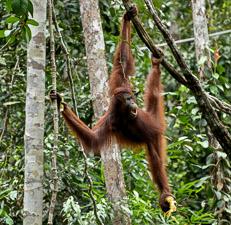
On the other hand, Seventh Generation on its own website talks about how they are doing things so that seven generations of humans can live in harmony with nature. To me, this is an insult to the Iroquois, who are credited with making that statement. Seventh Gen talks up a great game with their support of awareness programs, but at the same time, they continue to use a product that will see a great many of the planet's ancient forests destroyed in less than one generation if nothing is done.
Similarly, Earth Balance portrays itself as a an eco-friendly brand, and as I have challenged, there will be no balance on earth if brands like Earth Balance do not make a 100 percent commitment to sustainability. They buy 30 percent of their palm oil from South America and the rest from West Malaysia, where they claim no orangutans are found; all so they can claim to be free of the blame for orangutan deaths. But in the six years that I have campaigned on palm oil, I have not found one single source of palm oil that could declare itself to be 100 percent from west Malaysia or any other specific source. Even giant Unilever acknowledges that the supply chains are complex and that there is no way their massive purchasing power could effectively be traced back to a specific plantation or even region; so how did Earth Balance achieve this? I find the claim dubious, at best.
With so many environmentally destructive business practices out there, why have you chosen palm oil over other environmental concerns?
Palm oil ranks a close second after tar sands oil in terms of carbon emissions. We have millions of Americans and Canadians picketing and protesting tar sands oil pipelines, but meanwhile, we go home and recharge with food and body lotions made with conventional palm oil.
What, then, makes palm oil more significant and more damaging than other products?
It's unfortunate that the Malaysian and Indonesian governments are the caretakers of two of the richest, most biodiverse countries in the world. We are guilty in the West of having destroyed ecosystems ourselves, and for that, we are willing to pay these countries handsomely in REDD (UN Program on Reducing Emissions from Deforestation and Forest Degradation) programs to have them spare the forests so that we as a whole planet may have a chance to stall climate change. These governments, however, have refused to participate in REDD programs in general. I'm not quite sure what their reasons are, and the only thing I can think of is that REDD does not provide the type of quick income that palm oil does.
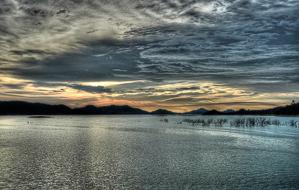
True, soy bean oil is equally damaging to the planet as a whole, but at least we see significant efforts being put in place by, for example, Brazil -- one of the biggest producers of soy products -- to reduce its impact on the planet. Because of popular press and the efforts of international conservationists, suppliers of soy are making valiant attempts to make their products sustainable. We are not seeing this out of Malaysia or Indonesia at all.
Why do governments and companies continue to support palm oil plantation development?
Governments have always used the betterment of livelihoods of poor jungle peoples and small holders as a reason for driving more palm oil plantations. I challenge both governments [of Malaysia and Indonesia] to show me where and how. I have personally seen situations in which landowners are promised good income, roads, hospitals, and schools in exchange for their land rights and properties. Unfortunately, I see more complaints about how few of these promises have materialized. These indigenous peoples and local farmers are seeing none of the benefits, and their rights to farm or otherwise use the land are being stripped away. There are multiple communities in both Malaysia and Indonesia that are fighting to have these promises kept.
The unfortunate part is that there are a lot of communities that look at short term gains -- money for a motorcycle, a couple of gas generators, etc. Many people will trade in their futures for this short term gain, and it's difficult to tempt them with long term goals, such as future employment or environmental protection.
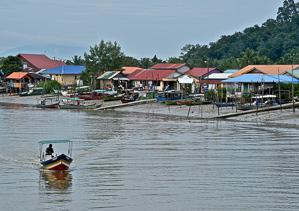
I can pull Yosef Manik, a PhD student at the University of Maine, into a wider discussion on this, but from what I have seen in Sarawak and Kalimantan, it's been about the loss of livelihoods. In an active case in West Kalimantan, for example, I see typical cases in which the son sold the land rights without his father's knowledge, which resulted in an exploitative land grab. In Central Kalimantan, farmers and indigenous land owners have been promised better futures if they join companies as plasma plantations, in which they get to work their acreage under the control of big plantations. For the most part, they end up being indebted to the big companies, not only for themselves but for their children, as well.
What do you think about Round Table on Sustainable Palm Oil (RSPO) certification?
It was a very weak scheme to begin with, full of loopholes, and it is being taken advantage of by Western brands who think that by pleading to be members of the RSPO or by buying from members of the RSPO, everything is okay. I see cases of RSPO members being accused of land grabs, removing HCV forests, etc. Recently, the RSPO has ramped up the enforcement of their rules, but much still needs to be done.
So what really makes a "sustainably-sourced" palm oil?
Sustainable palm oil can be made with a few simple principles. 1) Reduce the carbon emissions, especially from Land Use Change. 2) Respect the rights of peoples and their land titles and stop using surreptitious tactics to acquire land and land rights. 3) Respect HCV forests and the wildlife and biodiversity found in them. 4) Respect water quality. Oceans and rivers know no boundaries. Agro chemicals used in agriculture kill off marine and aquatic life.
What are your next steps in the campaign?
Immediate step is to continue to drive World Orangutan Day and raise awareness along the way. We've tried to do this without using much of the pictorial horrors that have influenced the strong EU and Australian awareness. A key next step is to urge legislative action. The United Kingdom has made a strong statement against conventional palm oil, and I believe the United States, especially California as the 9th largest economy in the world, should issue similar policies. I'll be working toward that goal.
What can we, as consumer, do to help?
Spread the message to your supporters, engage whatever tools and connections you have available, especially for legislative change. Educate yourself and sign petitions to help tell friends and family. Get your voice out there and let people and companies know where you stand and that you are not alone!
Photos are copyright protected and may not be used without permission. All photos are courtesy of Caroline Braker.